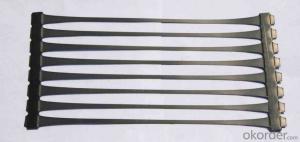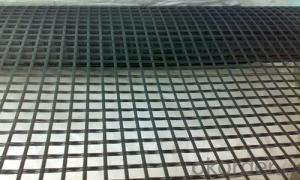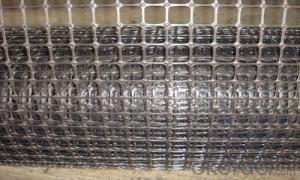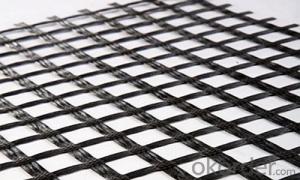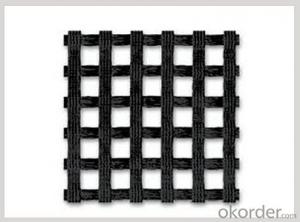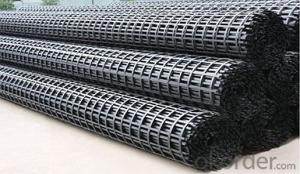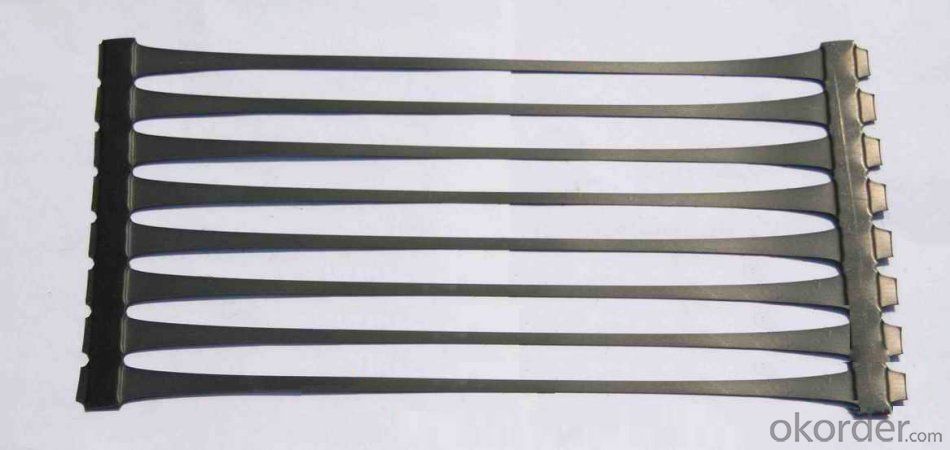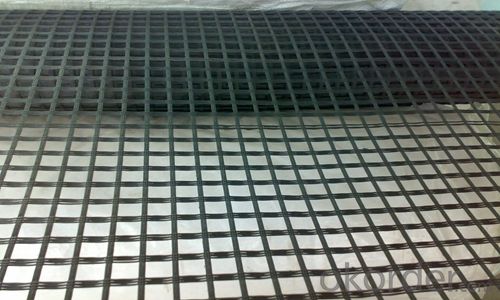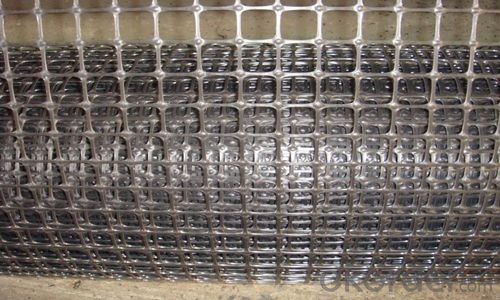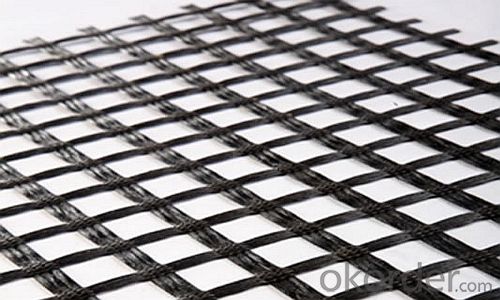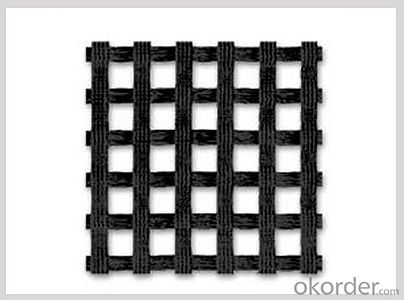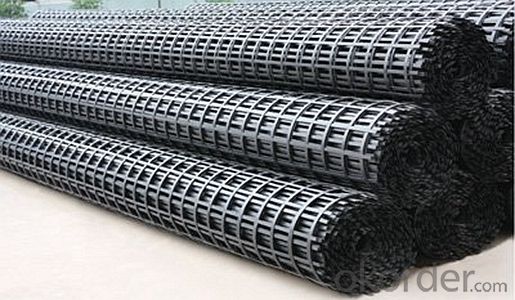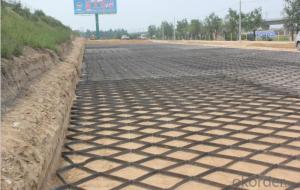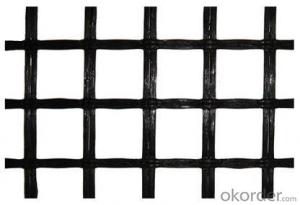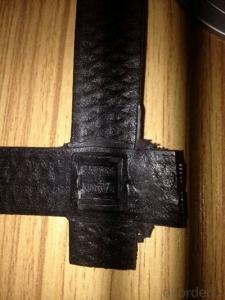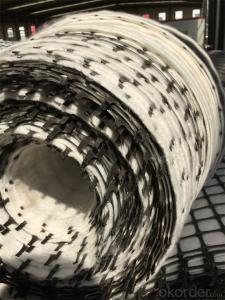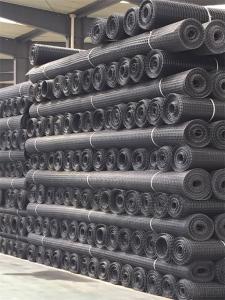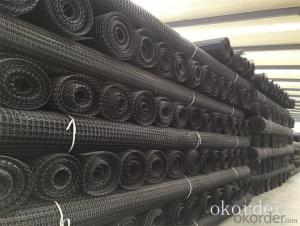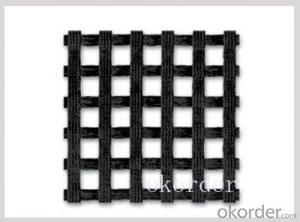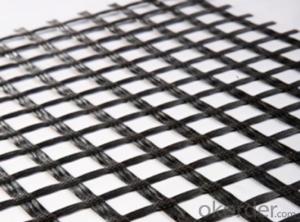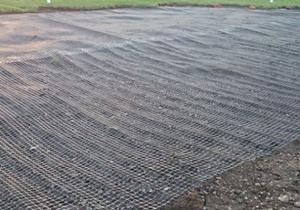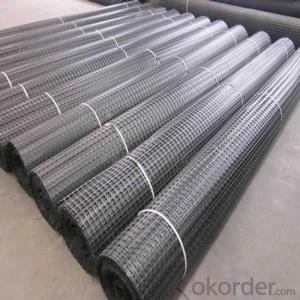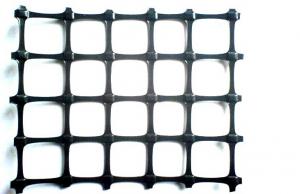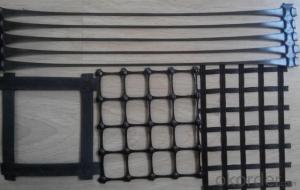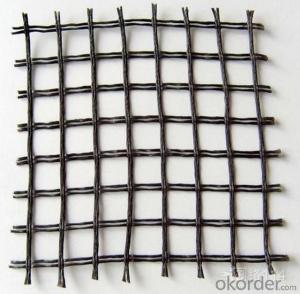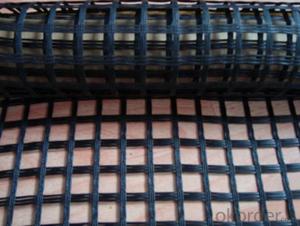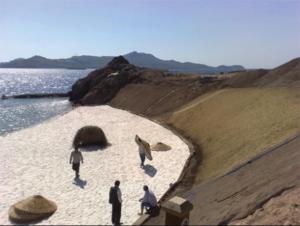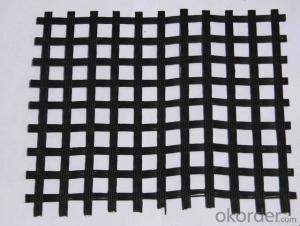Road Reinforcement Geogrids for Dikes, Dams, and Civil Engineering Construction
- Loading Port:
- China main port
- Payment Terms:
- TT OR LC
- Min Order Qty:
- 1000 m²
- Supply Capability:
- 10000000 m²/month
OKorder Service Pledge
OKorder Financial Service
You Might Also Like
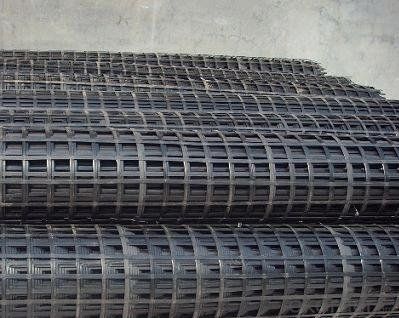
Introduction
Type:
Geogrids
Place of Origin:
Shandong, China (Mainland)
Brand Name:
OEM or Road
Model Number:
EGA50-50, EGA80-80, EGA100-100
High density Biaxial Geogrids
Biaxial geogrids are designed to have roughly the same tensile strength in both directions and to distribute loads over a wider area, increasing the load capacity of the soil. Base reinforcing geogrids interlock with the aggregate to confine the base and reinforce the subgrade. In paved or unpaved applications, they reduce rutting and help maintain the desired aggregate depth.
CNBM offers BaseGrid biaxial geogrids for base reinforcement. They are manufactured by welding or stitching together two layers of extruded, polypropylene, flexible geogrids to create a continuous sheet that will not separate. The two grids are offset before welding or stitching, creating a stable, continuous sheet with random-sized apertures for improved soil interaction.
Our Service
Quality assurance
1.On a regular basis or as per your request,we entrust national testing agencies to conduct quality inspections
2. Strictly in accordance with the ISO9001-2008 international quality system standard,we monitor and manage the whole process throughout production,quality testing,and measurement to ensure product quality
3. For quality-related construction delay or substandard construction(except for damage or losses due to customer’s responsibility or irresistible natural disasters),we have refunding,replacement,and repair services.We will respond to customers’ feedbacks on quality issues within 24 hours.
Packaging & Shipping
Packing: PLASTIC FILM INSIDE, AND WOVEN BAG OUTSIDE
Shipping: About 15 days after receipt the deposit
FAQ:
Q: What kind of payments does jenor support?
A: T/T, L/C, Cash are accepted.
Q: Do you charge for the samples?
A: Accordeing to our company policy, the samples are free, we only charge the freight fee. And we will return the freight fee during the next order.
Q: Can you produce according to customers' design?
A: Sure, we are professional manufacturer, OEM and ODM are both welcome.
Q: Do you have other products?
A: Yes, please check the pictures:
- Q: Are geogrids suitable for use in cold climates?
- Yes, geogrids are suitable for use in cold climates. Geogrids are made from materials that are resistant to temperature variations and have been designed to withstand the harsh conditions of cold climates. They provide excellent reinforcement and stabilization for soil and are commonly used in various applications such as road construction, retaining walls, and erosion control in cold regions.
- Q: Can geogrids be used in reinforcement of underground stormwater detention systems?
- Yes, geogrids can be used in the reinforcement of underground stormwater detention systems. Geogrids provide stability and strength to the system, preventing soil erosion and maintaining the structural integrity of the underground system. They are often used to reinforce the walls and base of the detention system, ensuring its long-term performance and effectiveness in managing stormwater.
- Q: What are the advantages of using geogrids in ground reinforcement?
- Geogrids offer several advantages in ground reinforcement, such as increased stability and load-bearing capacity. They distribute the load more evenly, reducing the risk of soil erosion and settlement. Geogrids also improve soil confinement, preventing lateral movement and promoting better compaction. They are versatile, cost-effective, and easy to install, making them a preferred choice for various applications like road construction, retaining walls, and slope stabilization.
- Q: What are the environmental impacts of using geogrids?
- The environmental impacts of using geogrids can vary depending on factors such as their production, installation, and disposal. However, in general, geogrids can have positive environmental impacts. They can help stabilize soil and reduce erosion, which can prevent the loss of topsoil and decrease sedimentation in nearby bodies of water. Geogrids can also be made from recycled materials, reducing the demand for virgin resources. However, the use of geogrids may also have some negative impacts, such as the energy consumption and greenhouse gas emissions associated with their production and transportation. Additionally, if not properly disposed of, geogrids can contribute to plastic pollution. Overall, while geogrids offer numerous environmental benefits, it is important to consider their life cycle and proper disposal to minimize potential negative impacts.
- Q: How do geogrids enhance soil reinforcement?
- Geogrids enhance soil reinforcement by providing additional tensile strength and stability to the soil. They are placed within the soil layers and act as a reinforcement material, distributing the forces and reducing the potential for soil movement. This helps to increase the overall strength and performance of the soil, making it more resistant to erosion, deformation, and other types of failures.
- Q: Can geogrids be used in shoreline protection against wave action?
- Yes, geogrids can be used in shoreline protection against wave action. Geogrids are commonly used to stabilize soil and prevent erosion. When installed along the shoreline, geogrids can help absorb the energy of the waves, reduce erosion, and provide protection to the shoreline. They are often combined with other materials, such as rocks or vegetation, to create an effective barrier against wave action.
- Q: Are geogrids suitable for slope stabilization?
- Yes, geogrids are suitable for slope stabilization. Geogrids are commonly used in slope stabilization projects due to their ability to reinforce soil and prevent erosion. They provide additional strength and stability to slopes, preventing potential landslides or slope failures.
- Q: Geogrid GSZ 100 50/PP what does it mean
- 100/50 is vertical and horizontal, a 100KN is a 50KN means, is a special model,
- Q: What are the long-term durability characteristics of geogrids?
- Geogrids have excellent long-term durability characteristics. They are typically made from high-strength materials such as polyester or polypropylene, which are resistant to degradation caused by UV exposure, chemical exposure, and biological factors. Geogrids also have high tensile strength, allowing them to withstand heavy loads and maintain their structural integrity over time. Additionally, they have low creep and deformation rates, meaning they can maintain their original shape and performance for an extended period. Overall, geogrids have proven to be highly durable and reliable for various applications in civil engineering and construction.
- Q: Biaxial tension geogrid
- In addition, there are steel plastic grille, fiberglass geogrid and so on
Send your message to us
Road Reinforcement Geogrids for Dikes, Dams, and Civil Engineering Construction
- Loading Port:
- China main port
- Payment Terms:
- TT OR LC
- Min Order Qty:
- 1000 m²
- Supply Capability:
- 10000000 m²/month
OKorder Service Pledge
OKorder Financial Service
Similar products
Hot products
Hot Searches
Related keywords
